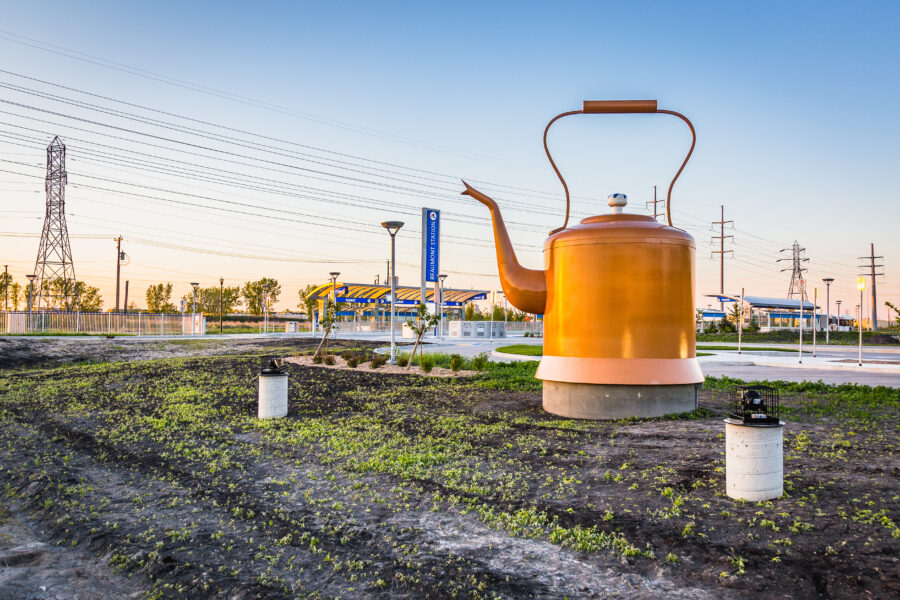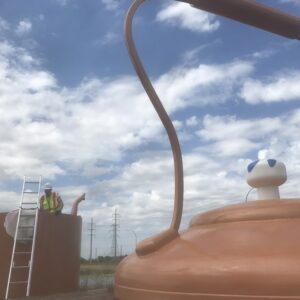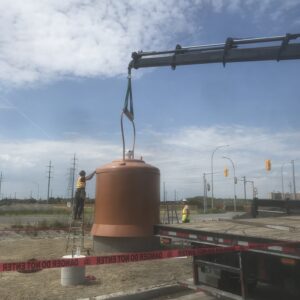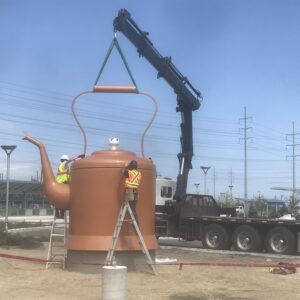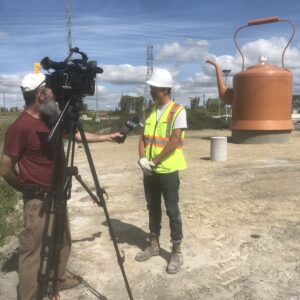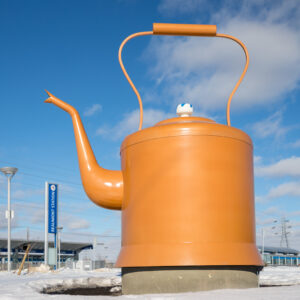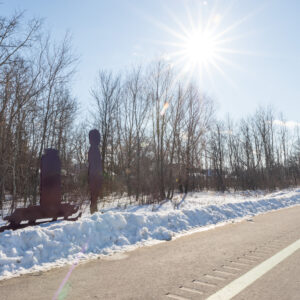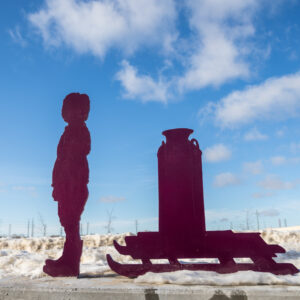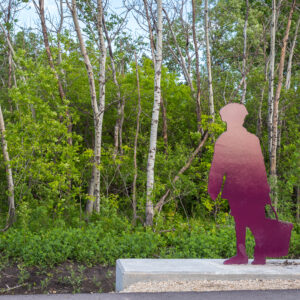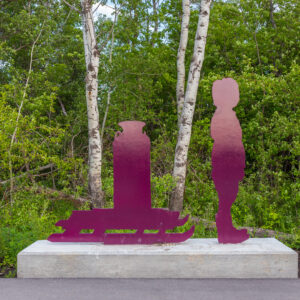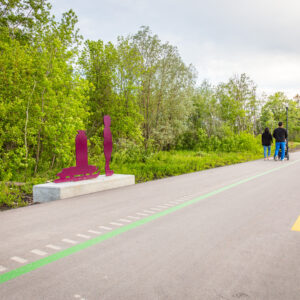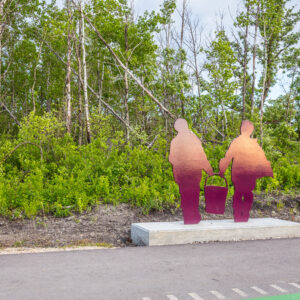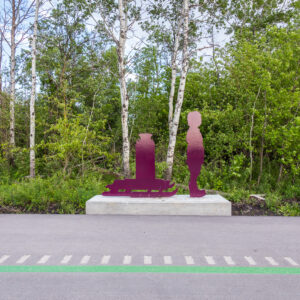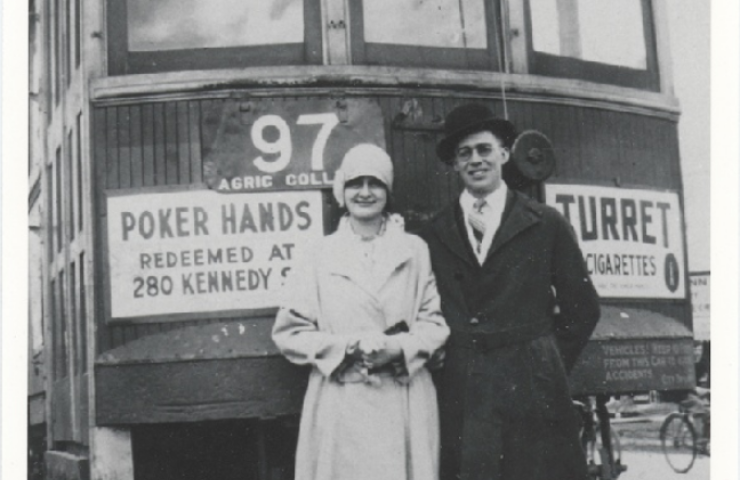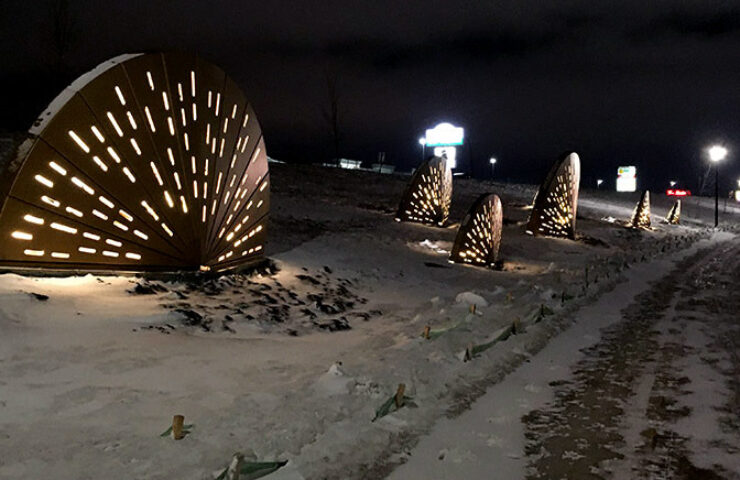Rooster Town, also known as Pakan Town, was a Métis road allowance community that existed on the outskirts of Winnipeg from 1901 to 1961. At its peak, it housed 59 families and a population of 250 people. Some families called Rooster Town home for three generations. Much of Rooster Town’s housing started out as simple one- and two-room structures and, over time, additions were made. The houses were said to rise up out of the tall prairie grass.
In this tight-knit community, a knock at the door was always greeted with a welcoming call and a place to sit, promptly followed by the kettle being put on for tea.
Rooster Town did not have access to basic amenities such as running water, sewer, electricity, and roads. The only source of water was a town pump located over a kilometre away, so residents carried water in buckets, filled empty dairy cans to pull by sled, or paid for water delivered by horse and cart. The Fetching Water silhouettes located along the Active Transit pathway illustrate this daily activity. Lack of access to clean water is a crucial issue that in 2019 is still relevant to many Indigenous communities across Canada.
In 1959, the City of Winnipeg ordered that the houses of Rooster Town be torn down and its residents evicted to make way for Grant Park Mall, Grant Park School and the expanding city neighbourhood of Fort Rouge. Rooster Town residents were consistently maligned in local media during the lead-up to the eviction. This media campaign of stigmatization inaccurately and unfairly portrayed the character and lifestyle of people in the community, while working to justify their removal. It propagated harmful stereotypes, contributing to public support for the unjust displacement of Métis people from their homes.
Rooster Town Kettle is modelled after the big copper kettle that would have had a permanent place on every wood stove in every home in Rooster Town.
Rooster Town Kettle was made large enough to boil the minimum amount of daily water needed to sustain a population of 250 people, as identified by the United Nations General Assembly in Resolution 64/292, the Human Right to Water and Sanitation.
Rooster Town Kettle is a permanent acknowledgement that a Métis community existed near this site from 1901 to 1961. This copper kettle is a symbol of the strong sense of community, generosity, and sharing found in Métis households and communities. The offering of hot tea and with it a chance to sit, gossip, tell stories and catch up is still the cornerstone of a Métis visit.
-Ian August
This work was created through the Winnipeg Arts Council’s Public Art Program in collaboration with Winnipeg Transit, PCL, and Plenary Group as part of Winnipeg's SouthWest Rapid Transitway expansion project.
For more information, visit the Rooster Town Online Archive, Winnipeg Public Library's Rooster Town Info Guide, and the City of Winnipeg's Indigenous Relations Journey of Reconciliation Rooster Town webpage.
In the media:
- Tourism Winnipeg Only in the Peg, posted August 4, 2020: Experience Indigenous Winnipeg through history, art, shops and food
- City of Winnipeg, posted July 9, 2020: The art you'll find along the Southwest Transitway
- CTV Manitoba, posted May 11, 2020: The art marking Winnipeg's newest transit route
- The Uniter, posted January 29, 2020: STORIES LEFT UNTOLD New public art explores Winnipeg’s Métis history
- Winnipeg Free Press, posted September 8, 2019: Pipin' hot: Giant kettle honours historic Métis community of Rooster Town

